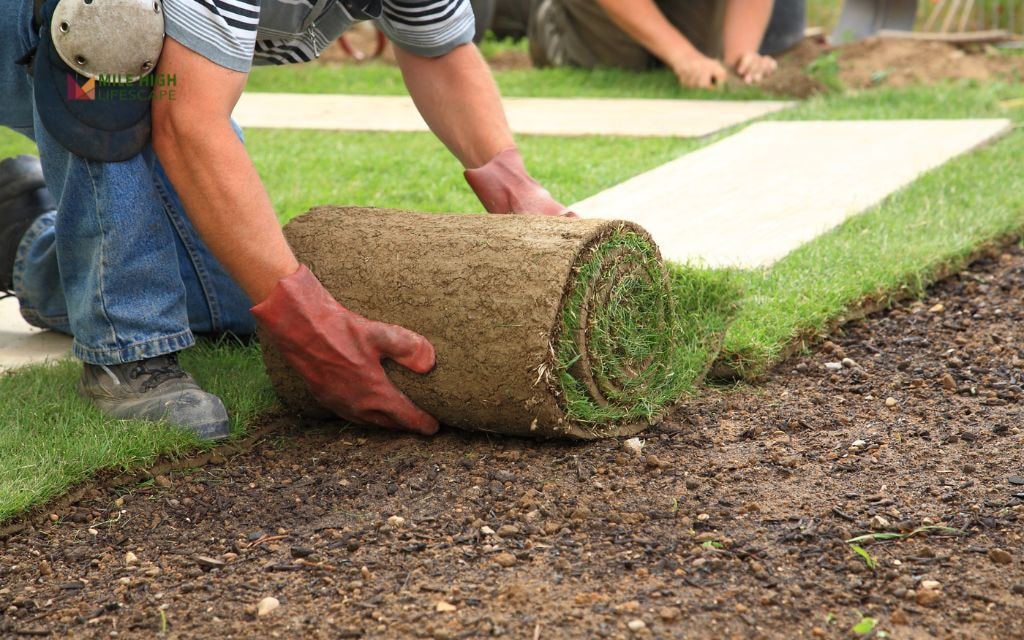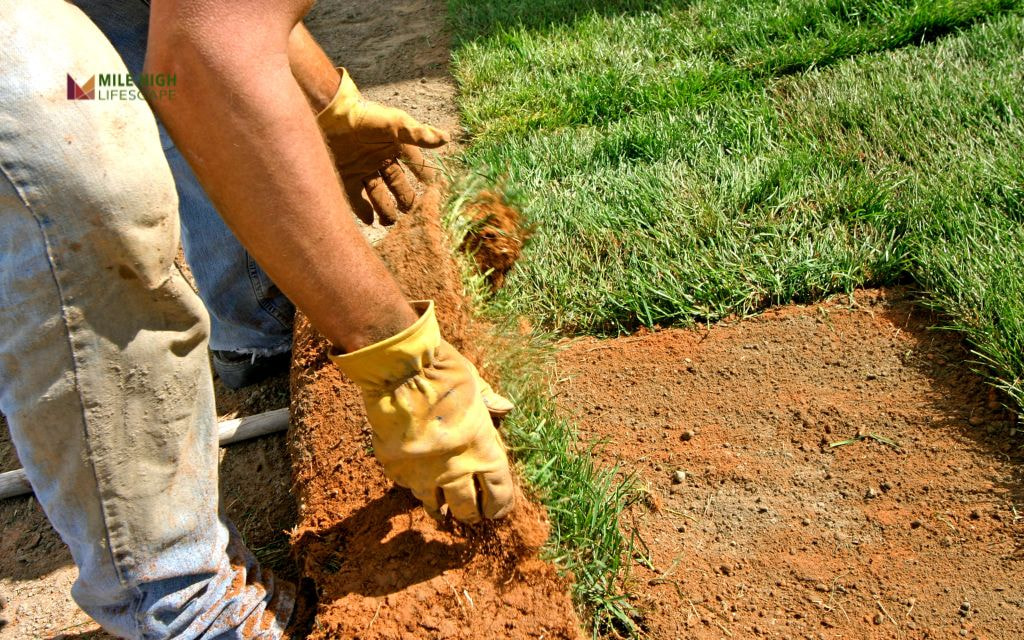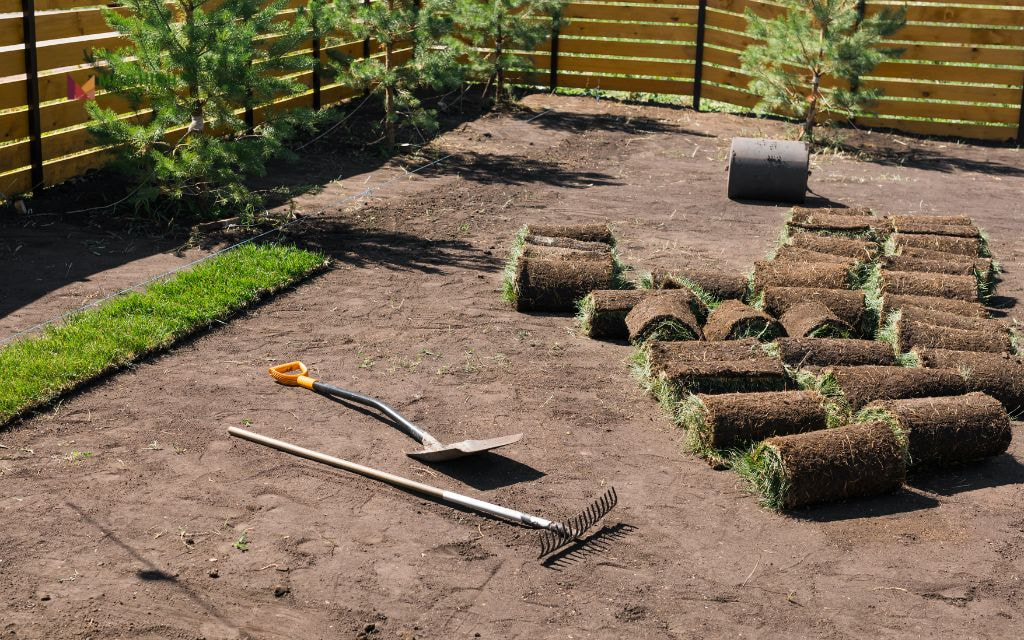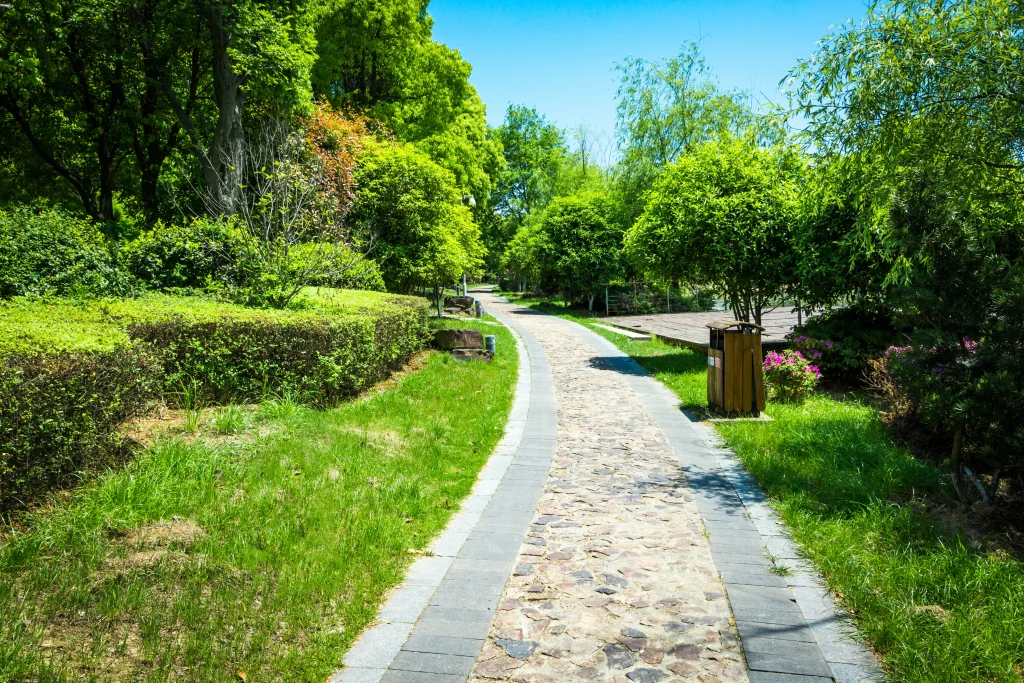“When is the best time to lay sod in Denver?” The answer is: early spring and late fall are the best time of year to lay sod in Denver. These periods provide moderate temperatures and favorable conditions that promote strong root development and successful establishment.
In this guide, you’ll discover the specific best months for Denver sod installation, the advantages and challenges of each season, how to navigate local watering restrictions, and essential care strategies for newly installed turf.
Whether you’re replacing an existing lawn or creating a new one, understanding Denver’s seasonal patterns will help you achieve a vibrant, resilient lawn that thrives in our challenging climate.
What’s the Best Time to Lay Sod in Denver?
Installing sod during Spring (late April through early June) or Fall (late August through September) can provide optimal results.
These windows provide the ideal combination of soil temperature, moisture, and growing conditions that new sod requires to establish strong root systems.
- Spring installations leverage natural moisture and warming soil temperatures to encourage quick root development.
- Fall installations benefit from cooling temperatures that reduce evaporation stress while still providing adequate time for root establishment before winter dormancy.
Spring Sod Installation in Denver
Spring provides excellent conditions for new sod in Denver yards. The soil warms consistently through April and May, creating the perfect environment for root development while natural precipitation supplements irrigation needs.
Key advantages of spring installation:
- Natural moisture reduces irrigation demands
- Warming soil temperatures promote rapid root establishment
- Aligns with typical irrigation system activation
- Provides full growing season for establishment before winter
Challenges to navigate:
- Late spring snow or frost events can damage new installations
- Requires vigilance against emerging weeds
- Installation demand increases, affecting availability and pricing
Professional tip: Order Kentucky Bluegrass sod in March to secure availability before peak demand in May.
Fall Sod Installation in Denver
Many landscape professionals consider fall the premier season for sod installation in Denver. As summer heat subsides in late August, conditions become ideal for cool-season grasses like Kentucky Bluegrass and Tall Fescue.
Benefits of fall installation:
- Reduced evaporation rates preserve soil moisture
- Decreased weed pressure minimizes competition
- Moderate temperatures reduce establishment stress
- Root development continues even as top growth slows
Important considerations:
- Installation must complete at least four weeks before the first hard freeze
- Requires attention to supplemental watering through fall
- May need protection if early freezes occur
Expert advice: Begin soil preparation in July to ensure timely installation once temperatures moderate in late August.

Is It OK To Lay Sod In Summer? (July–Mid August)
While possible, summer sod installation in Denver presents significant challenges.
The intense heat, low humidity, and water restrictions create stress conditions that demand extra care and attention.
Summer installation risks:
- Rapid drying in 90°F+ temperatures demands multiple daily waterings
- Denver water restrictions may limit necessary irrigation frequency
- Heat stress can delay root establishment
- Higher failure rate without proper management
For successful summer installations:
- Install early morning to minimize sod exposure to peak heat
- Water immediately after installation and maintain frequent irrigation
- Consider temporary shade solutions for high-exposure areas
- Ensure proper soil preparation to maximize moisture retention
Summer installations succeed more frequently with professional oversight, properly adjusted irrigation systems, and in yards with partial shade protection.
Is Winter Sod Installation Possible in Denver?
Maybe, but it’s quite hard. Winter sod installation remains viable in Denver during unfrozen ground conditions. The sod enters dormancy but will establish roots once soil temperatures rise in spring.
Winter installation advantages:
- Secures your place in the installation queue before spring rush
- Often provides better pricing and availability
- Allows for early spring green-up without installation delays
Winter installation considerations:
- Minimal visible growth until spring temperatures rise
- Requires careful protection against desiccation during dry winter periods
- Increased risk of frost heave in poorly graded soil
- Limited root development until soil warms
This approach works best with professionally managed installations that incorporate proper soil preparation techniques and winter care protocols.
Factors That Influence the Best Time to Lay Sod in Denver
Multiple Denver-specific factors affect ideal sod installation timing beyond just the season:
- Soil temperature: Root development begins at 55°F and accelerates as soil warms to 65°F
- Sun exposure: South-facing lawns heat faster, requiring earlier spring or later fall installation
- Water restrictions: Denver Water’s rules vary seasonally and during drought conditions
- Grass variety: Kentucky Bluegrass establishes differently than Tall Fescue blends
- Irrigation capability: Manual vs. automated systems impact management options
- Usage timeline: Events, home sales, or renovation schedules may dictate timing
- Slope and exposure: Hillsides and wind-exposed areas dry faster, affecting establishment

How to Take Care of New Sod for Each Season
Here are some helpful tips to take care of new sod for each season:
Spring Sod Care
Spring-installed sod requires consistent moisture while roots establish connection with the underlying soil:
- Water twice daily for the first 2 weeks, then gradually reduce frequency
- Monitor soil moisture by lifting sod corners to check contact with soil beneath
- Apply starter fertilizer 3-4 weeks after installation to encourage root development
- Set mowing height at 3 inches once sod requires its first cut (typically 2-3 weeks after installation)
- Control weeds through proper mowing rather than herbicides until established
Summer Sod Care
Summer installations demand vigilant attention to prevent desiccation:
- Water 3-4 times daily for 5-10 minutes each session during the first week
- Irrigate during early morning and evening to maximize absorption
- Avoid midday watering, which promotes fungal development
- Delay mowing until sod firmly roots (tugging on a corner should meet resistance)
- Apply light applications of water during the hottest portions of the day if visible wilting occurs
Fall Sod Care
Fall installations benefit from more moderate conditions but require protection as winter approaches:
- Water once in early morning and again in late afternoon during establishment
- Reduce irrigation frequency but increase duration as temperatures cool
- Apply fall fertilizer no later than early October to support root development
- Clear leaves promptly to prevent suffocation
- Ensure irrigation systems are properly winterized before freezing temperatures arrive
Winter Sod Care
Winter-installed sod requires different management to protect dormant turf:
- Minimize foot traffic until fully established
- Water during dry winter periods when temperatures exceed 40°F and soil isn’t frozen
- Remove snow accumulation exceeding 6 inches to prevent mold development
- Delay fertilization until growth resumes in early spring
- Monitor for desiccation during dry, windy periods
Best Sod Types for Denver Installation
Denver’s climate demands grass varieties adapted to high altitude, temperature extremes, and water conservation:
- Kentucky Bluegrass dominates Denver landscapes due to its cold hardiness, recovery capacity, and attractive appearance. It establishes more slowly but creates a dense, durable turf.
- Tall Fescue varieties offer superior drought tolerance through deeper root systems, requiring less supplemental irrigation once established.
- Turf-type blends combining Kentucky Bluegrass with perennial ryegrass or fescue varieties provide balanced performance, combining quick establishment with long-term resilience.
Avoid warm-season grasses like Bermuda in Denver, as they struggle with winter survival at our elevation and latitude.
Professional recommendation: Select sod grown at similar elevations to Denver for improved acclimation to local conditions.

Professional Sod Installation vs DIY in Denver
While DIY sod installation offers cost savings, professional sod installation provides significant advantages in Denver’s challenging climate:
Professional installation benefits:
- Precise soil preparation optimized for Denver’s clay soils
- Proper grading to prevent future drainage issues
- Expert timing decisions based on local conditions
- Rapid installation that minimizes root exposure
- Access to premium sod varieties with local adaptations
- Knowledge of Denver-specific watering requirements
DIY advantages:
- Lower direct costs
- Flexible timeline
- Personal control over the process
Professional installation proves particularly valuable for summer installations, large properties, and projects with tight deadlines or challenging soil conditions.
If you decide to hire a professional, knowing the cost of sod installation is very important. Check out our guide on that topic now.
Conclusion
Installing sod during Denver’s optimal spring or fall windows improves establishment success while reducing water consumption and maintenance requirements. The investment in proper timing and preparation yields years of lawn enjoyment with minimal ongoing inputs.
Remember that proper soil preparation, installation techniques, and consistent aftercare remain equally important to timing considerations for successful sod establishment in Denver’s unique climate.
Contact Mile High Lifescape at (303) 877-9091 for a free sod consultation to determine the optimal sod installation window for your specific property conditions and needs.
Frequently Asked Questions (FAQs)
What month is best to lay sod in Denver?
Late April through May and September represent the ideal months for sod installation in Denver, offering moderate temperatures and optimal soil conditions for root establishment.
Is June too late for sod in Denver?
June installations remain viable in Denver but require more intensive irrigation management as summer heat intensifies. Success depends on proper irrigation systems and diligent attention to soil moisture levels.
Is it better to sod in the fall or spring in Denver?
Fall offers slight advantages over spring for Denver sod installation due to decreasing temperatures, reduced evaporation rates, and diminished weed pressure. However, both seasons provide excellent establishment windows with proper management.
Does sod require more water than seed in Denver?
Initially, sod requires more frequent watering than seed to prevent desiccation, but the total water volume often proves comparable over the entire establishment period. Sod typically reaches full establishment faster, potentially reducing the overall watering period.
Can I lay sod before a snowstorm in Denver?
Yes, sod can be installed before snowfall in Denver. Snow actually provides insulation and moisture for newly installed sod. The primary concern involves ensuring good soil contact before freezing occurs.
